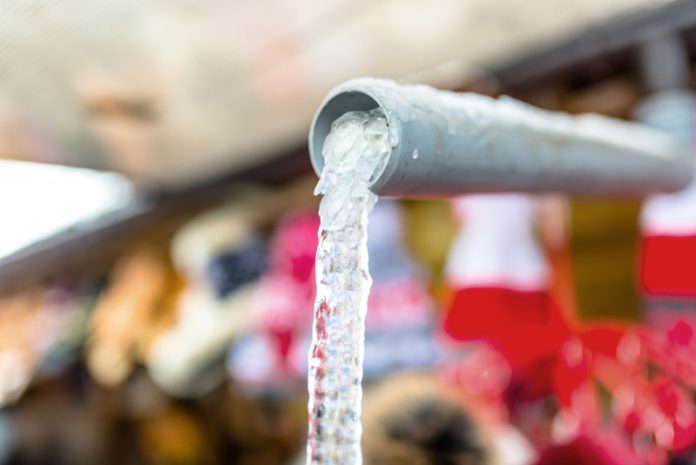With the cold winter months upon us, it’s good to ensure your HVAC system is in good condition for the cold season. As long as your HVAC system functions properly and manages to preserve your home comfort throughout the year, you have no reason to worry.
However, having faulty condensation lines become frozen or faulty can wreak havoc on your home systems. Heating, ventilation, and air-conditioning companies like River Valley Air Conditioning in HVAC Fort Mohave, AZ, warn that a freezing condensation line can damage an entire HVAC system.
So, we’ll discuss the best practices to prevent condensation lines from freezing to avoid these costly consequences. Keep reading to learn more!
Why do the condensation lines freeze?
Low temperatures are the leading cause of frozen condensation lines. During winter, the temperatures drop significantly, and it is prevalent to have frozen condensation lines. When the pipe freezes, it makes the HVAC system not function properly.
Thankfully, we have discussed some preventative measures below to take and keep your condensation line from freezing and causing hitches to your entire system.
How to prevent your condensation line from freezing
Installing weatherproof lines is the most effective way to protect your condensation line from freezing. But other preventative measures to take are:
1. Insulate the drain
Insulation is the most effective way to ensure that condensation lines do not freeze.
The U.S. government and other stakeholders have confirmed that proven weatherproof materials protect condensation lines from freezing even when temperatures hit negative zero.
Contacting a professional installer to help insulate your condensation lines is ideal. Besides, that would be a less costly and invasive option.
2. Use Ice Melter
Fixing your condensation lines with ice melter on the underside of the exit point is also an option.
To know you have chosen the best ice melter, you’ll notice that when spread out, it’ll turn a bluish hue when in contact with the snow and ice. This shows a successful reaction between the melter and the snow. The best time to lay down the ice melt is before snow and ice fall to curb the freezing of the condensation lines.
So, how does ice melter, also known as deicer, work?
The ice melter works to lower the water’s freezing point by restricting the formation of ice or snow. This means that ice melters also break up the ice or snow buildup, making it an invaluable tool for keeping your condensation line free of blockage and clear in winter.
3. Apply heat tape
Depending on the person who installed your system, the condensation line might poentially get exposed beyond the exit point. If this is the case, you must provide some insulation so your drain line can work perfectly even at subzero temperatures.
Applying the heat tape could prevent ice from forming in your condensation line. In addition, you can wrap around the parts of your exposed condensation line to ensure there is no ice buildup or ice dams when the temperatures drop to subzero.
The heat tape is generally flexible and thin. So, the ideal time to insulate your condensation line with heat tape is before winter.
What happens if your condensation line is already frozen?
So far, we’ve looked at the preventive measures to protect your condensation lines from freezing. But what do you do when you discover your condensation lines are frozen?
At that point, it could be too late to apply preventative measures. While you can thaw your condensation line if it’s frozen, contacting an expert is the most effective way. But before you can do that, there are some primary methods that you can apply.
The vastly and commonly applied methods are that you can use heat wraps or hot water bottles that professionals usually use to thaw your clogged condensation line.
So, let us have an in-depth analysis of these two primary methods.
1. Hot water bottle
Though this method could take some time and a few applications, it is the cheapest option. All required is to put hot water in a bottle and carefully put it on the pipe. The heat emitted from the water bottle will work on the ice and eventually break up the blockage of the condensed line.
However, this is tedious as you must keep refilling the bottle with hot water, as the water will cool down promptly. Though topping up the water and reapplying can aggravate, you are sure of saving a few coins.
2. Heat wraps
Another DIY (Do It Yourself) method to thaw your condensation line is using a heating pad used in the medical field. That is much easier than the hot water bottle. Most people across the globe use these heat pads for a myriad of medical reasons.
Depending on the type of heating pad you invest in, you could experience many problems similar to the ones when using a water bottle. However, if you invest heavily in better quality ones, your condensation line could thaw in just a single application.
Moreover, if you can afford an electric one, the better because you can fix an extension cord to keep it powered throughout. That could save you from the hustle of reapplication and make your condensation line thaw faster.
The Centers for Medicare and Medicaid Services depict that quite a significant number of purchased heating pads are for conducting preventative measures for condensation lines. So, the agency has outlined the guidelines which affect the purchasing of heating pads.
Takeaway
The United States Environmental Protection Agency (EPA) states that preventative measures on condensation lines could save from paying substantial utility bills. Most homeowners need to become more familiar with their HVAC System condensation line. It is an essential part of your HVAC system, but because it rarely causes issues, most people are blind to it.















